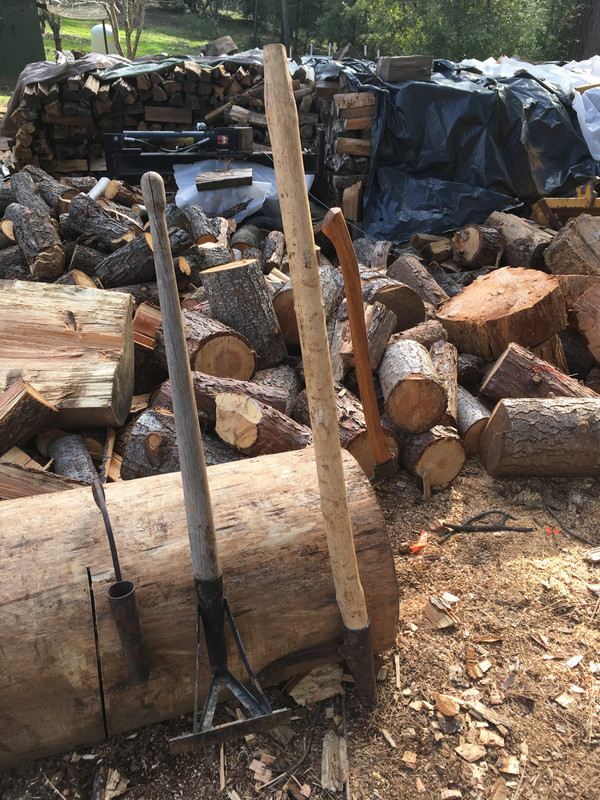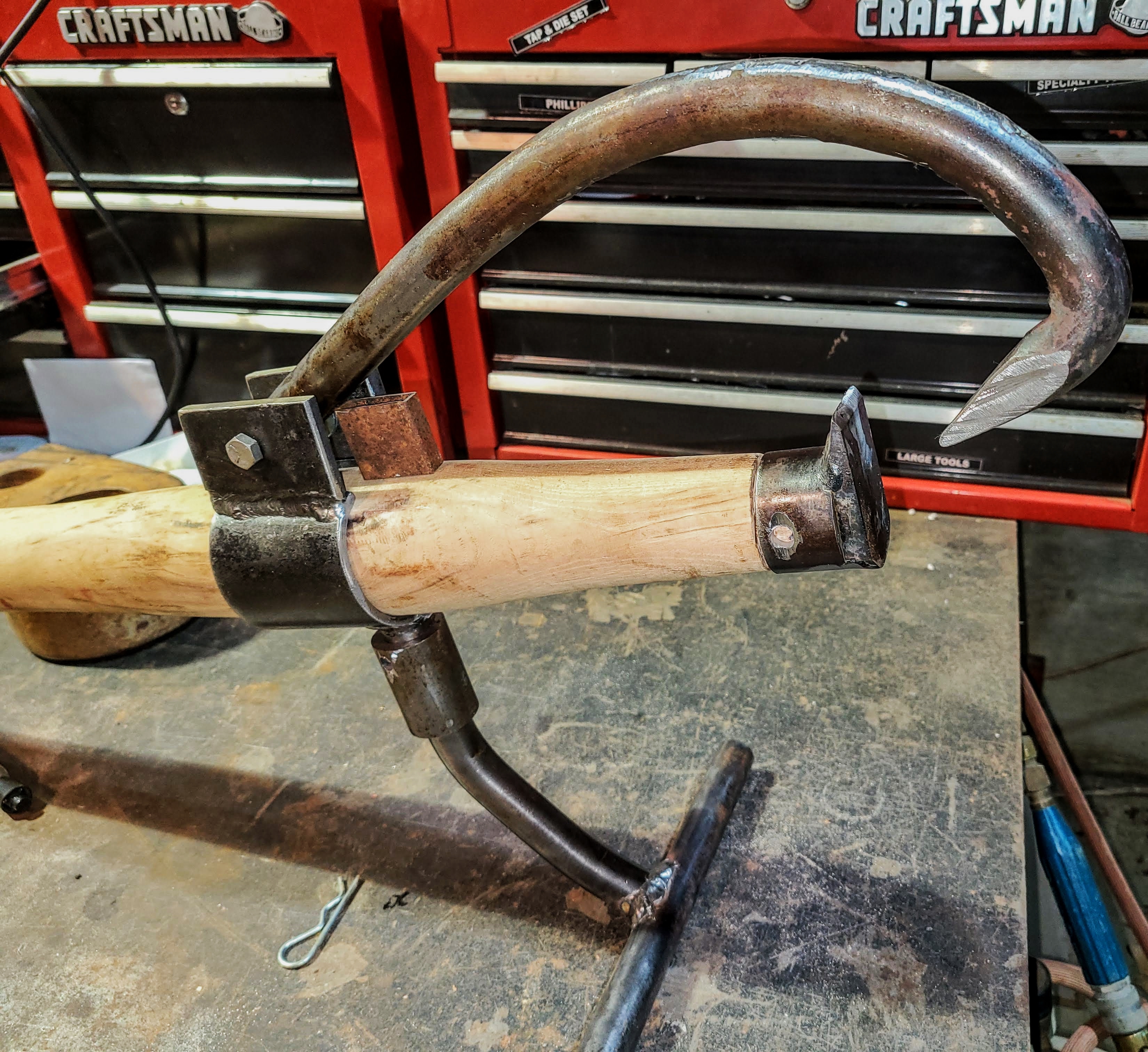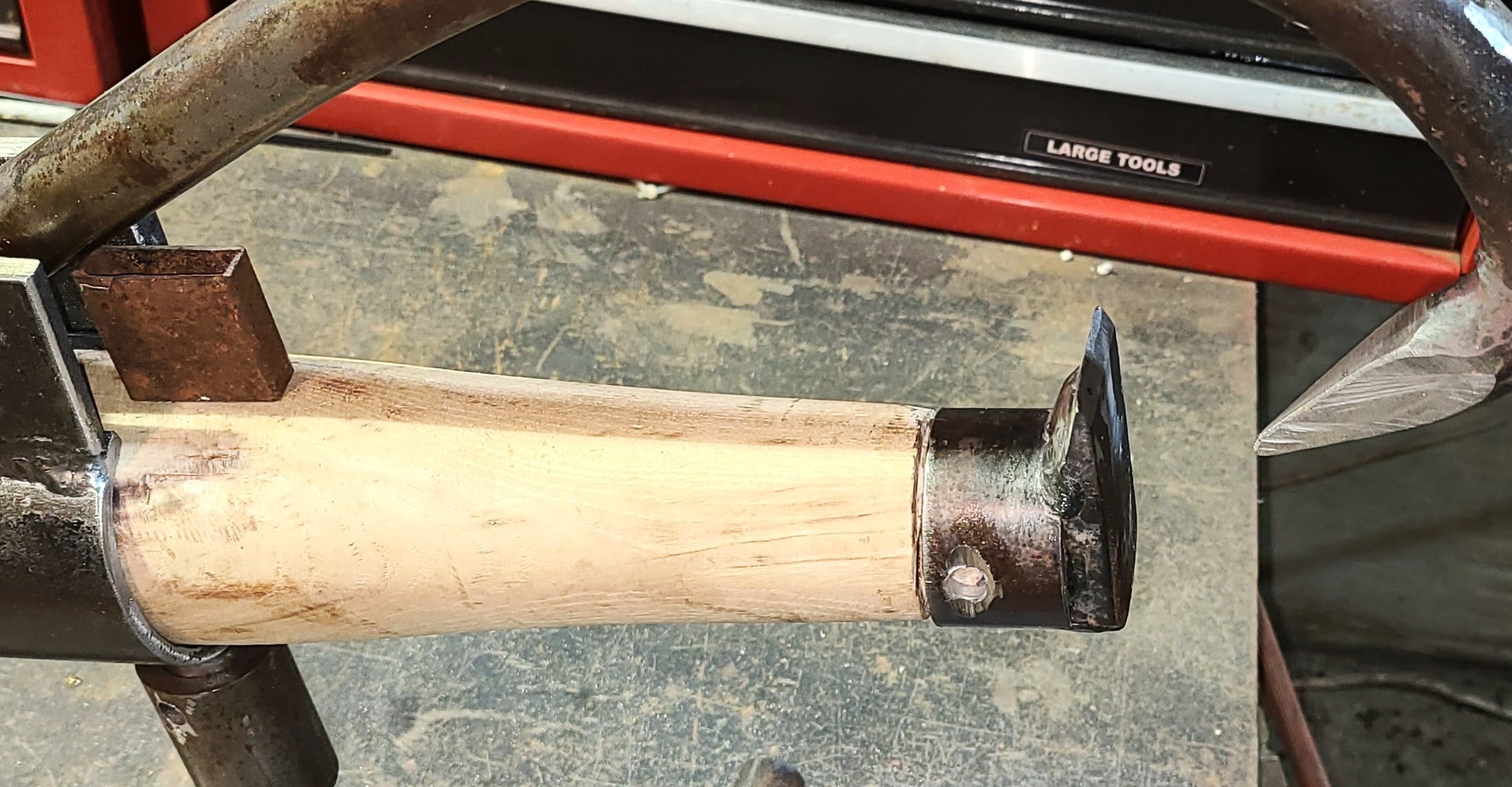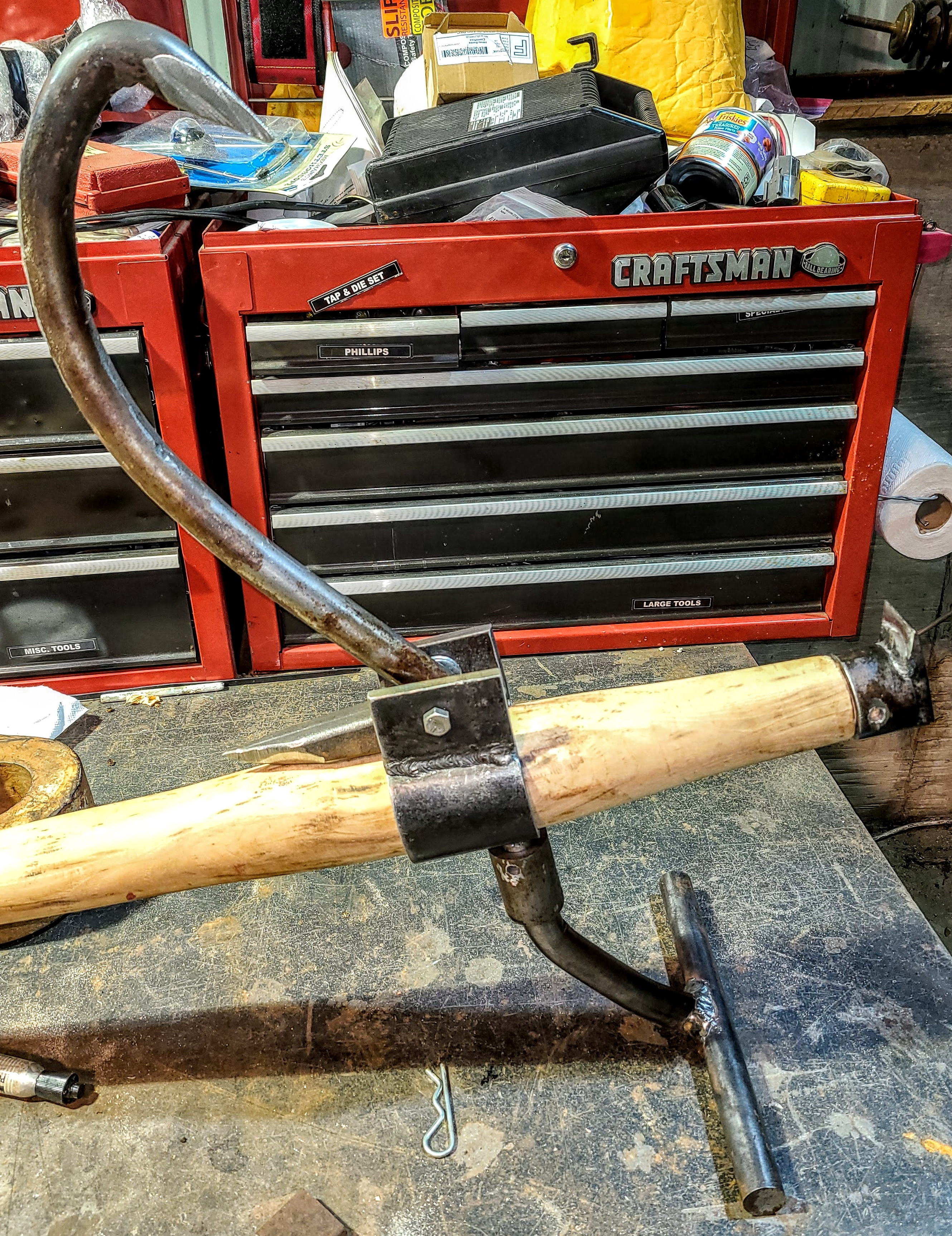I was at a local surplus dealer,, he had some wood handles (axe, maul, etc,,,) and I was picking through them,,
I noticed a CANT handle, it was $5,, it was so large in diameter, I did not recognize it.
The guy told me what it was,, so I figured I would try to make a BIG cant,,
I borrowed a neighbors cant,, and so far I sort of duplicated his, as far as dimensions, etc,,
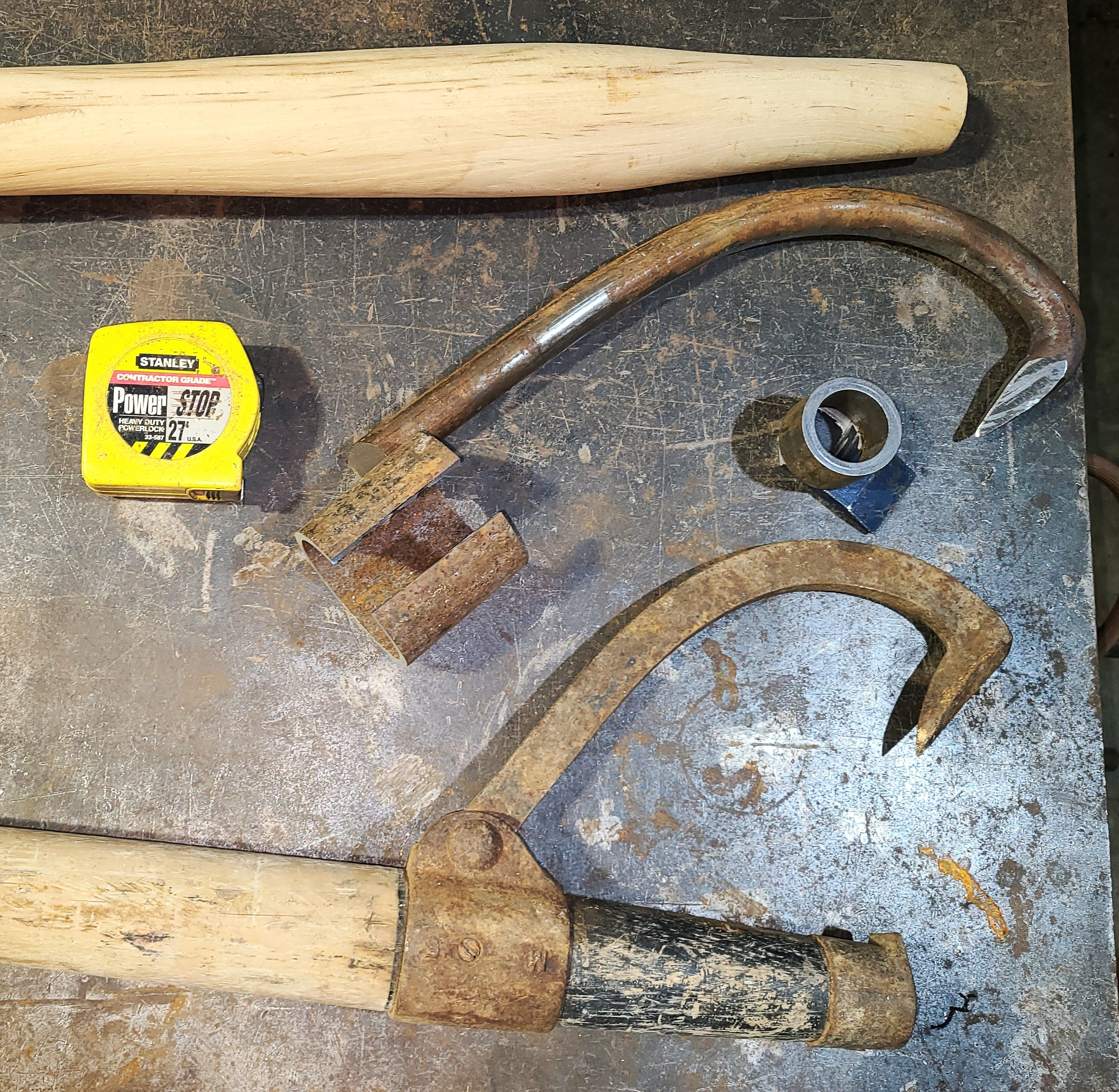
The hook turned out pretty nice, it is one inch solid round,, a little beefier than the neighbors.
I bent the steel bar with my wood splitter.
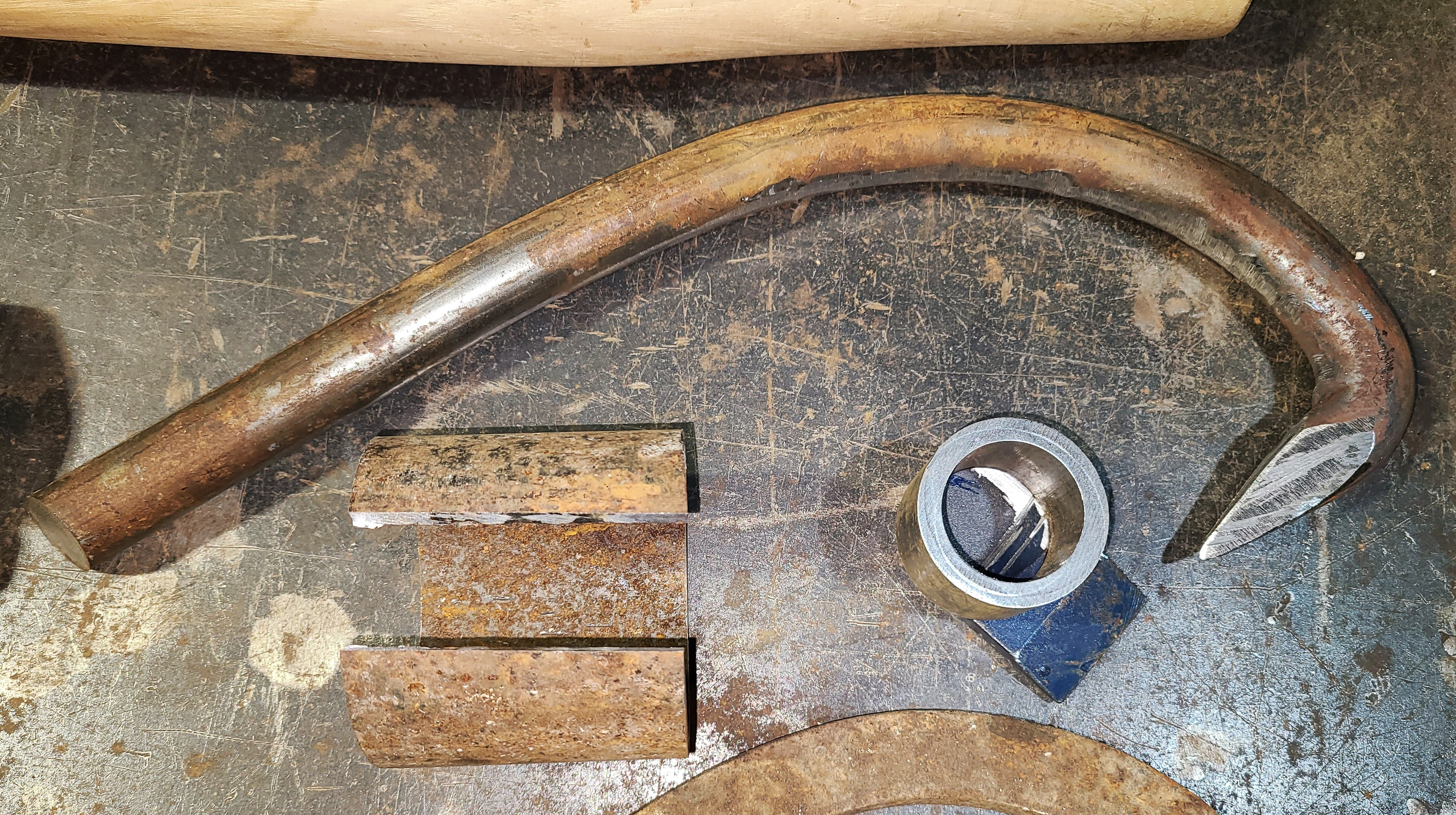
The rest of the parts are mostly just sawing of steel.
I was getting ready to weld the parts and I thought of the leg that will hold a log off the ground,, so back to the saw,, more parts,,
(I still have to "whittle" the cant pole a little so that the hook bracket will fit)
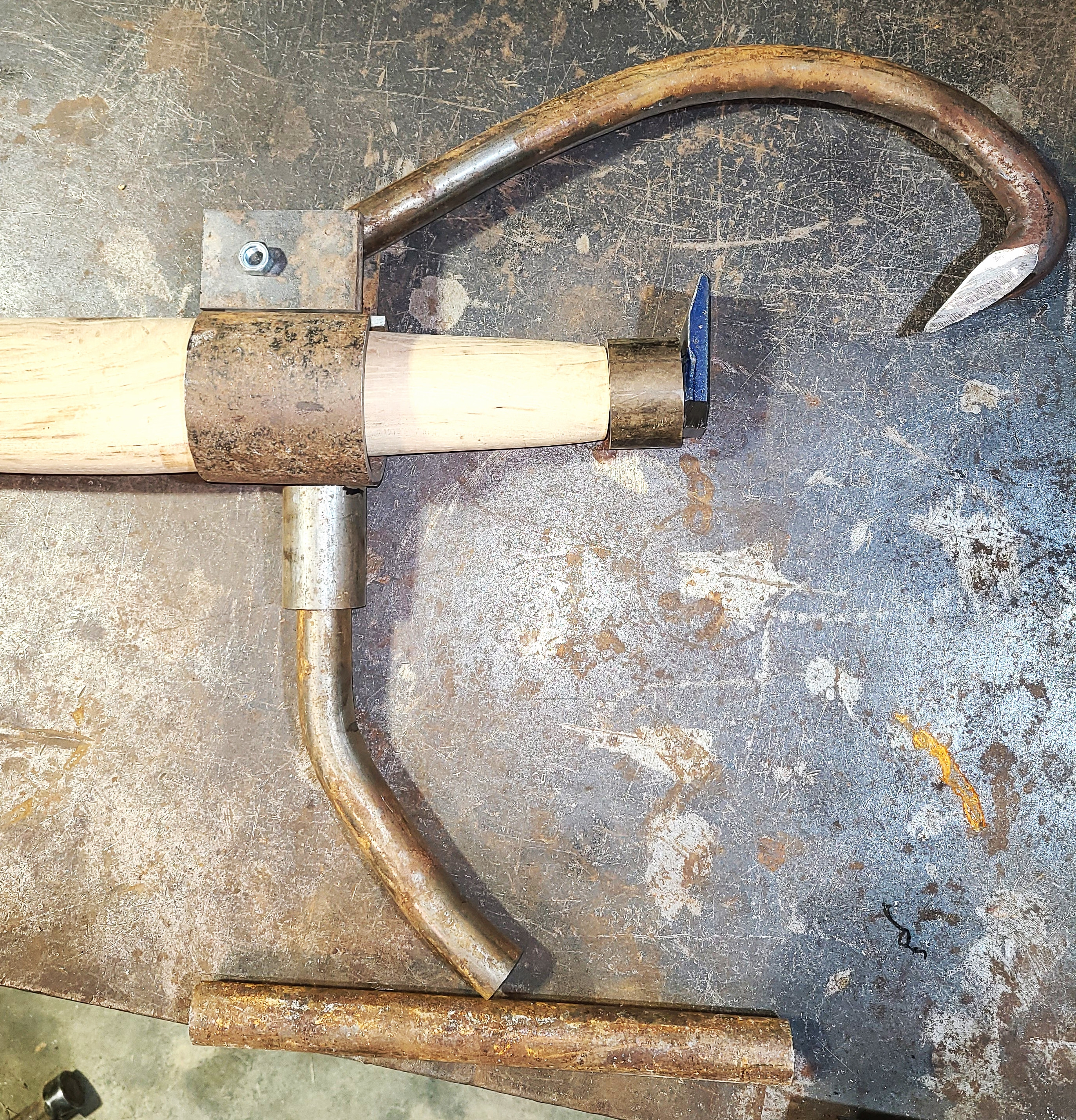
I still have a couple questions,,,
How far should the little steel tooth stick out at the end of the cant?
My neighbors only sticks out 1/4",, that seems awfully short,,
Should I make it longer??
Should that little steel tooth at the end of the cant have "points" ??
Should I connect the tooth at the end of the cant with the bracket that holds the hook with about 8 inches of steel bar??
Some are connected, some are not.
The bar I found to lift the cant off the ground is about 8 inches long,,
Does that seem to be high enough, ?? Should it be higher? lower??
Any insight would be greatly appreciated,,
Thanks for looking!
I noticed a CANT handle, it was $5,, it was so large in diameter, I did not recognize it.
The guy told me what it was,, so I figured I would try to make a BIG cant,,
I borrowed a neighbors cant,, and so far I sort of duplicated his, as far as dimensions, etc,,

The hook turned out pretty nice, it is one inch solid round,, a little beefier than the neighbors.
I bent the steel bar with my wood splitter.

The rest of the parts are mostly just sawing of steel.
I was getting ready to weld the parts and I thought of the leg that will hold a log off the ground,, so back to the saw,, more parts,,
(I still have to "whittle" the cant pole a little so that the hook bracket will fit)

I still have a couple questions,,,
How far should the little steel tooth stick out at the end of the cant?
My neighbors only sticks out 1/4",, that seems awfully short,,
Should I make it longer??
Should that little steel tooth at the end of the cant have "points" ??
Should I connect the tooth at the end of the cant with the bracket that holds the hook with about 8 inches of steel bar??
Some are connected, some are not.
The bar I found to lift the cant off the ground is about 8 inches long,,
Does that seem to be high enough, ?? Should it be higher? lower??
Any insight would be greatly appreciated,,
Thanks for looking!





